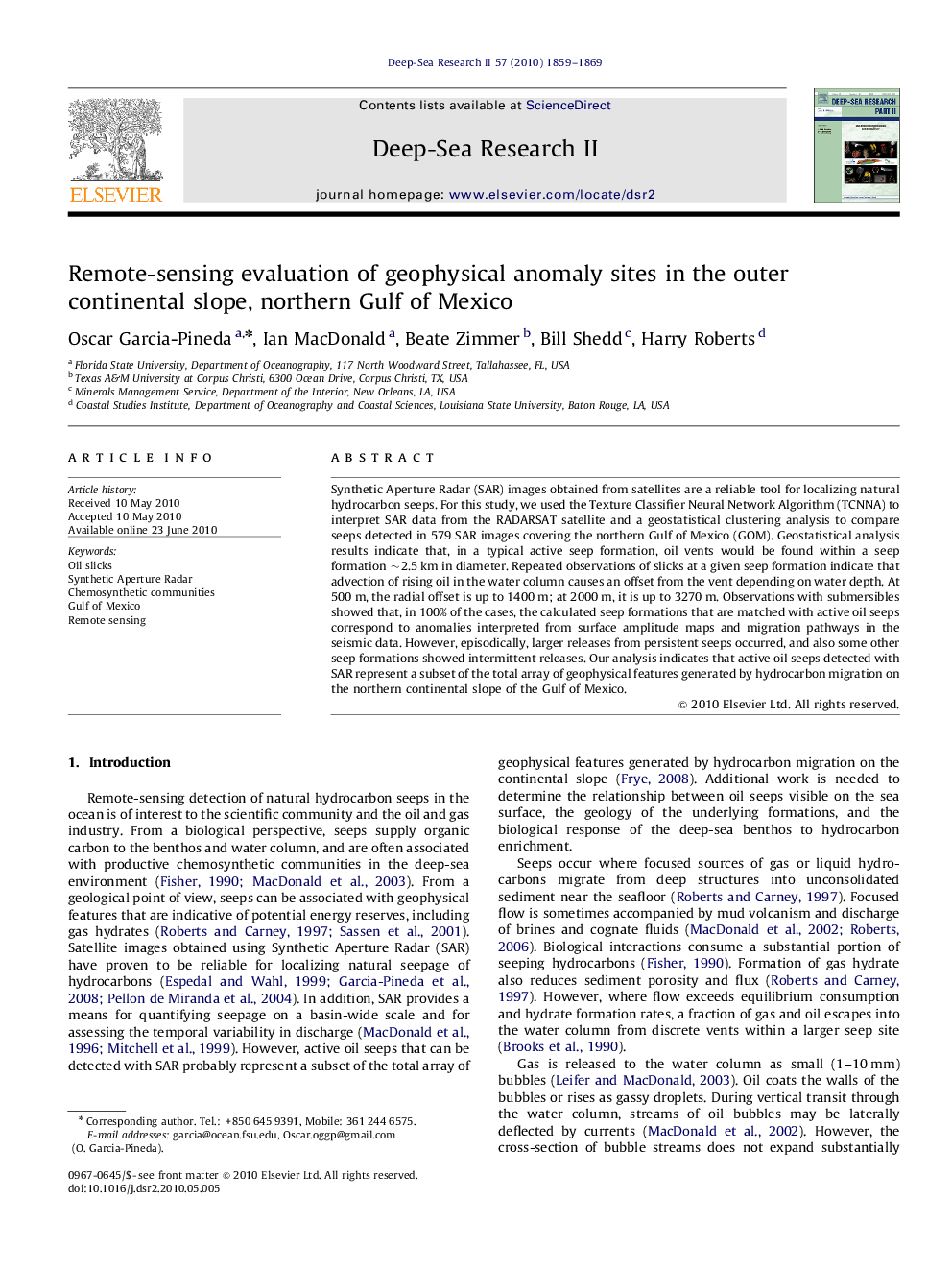| کد مقاله | کد نشریه | سال انتشار | مقاله انگلیسی | نسخه تمام متن |
|---|---|---|---|---|
| 6384339 | 1626471 | 2010 | 11 صفحه PDF | دانلود رایگان |

Synthetic Aperture Radar (SAR) images obtained from satellites are a reliable tool for localizing natural hydrocarbon seeps. For this study, we used the Texture Classifier Neural Network Algorithm (TCNNA) to interpret SAR data from the RADARSAT satellite and a geostatistical clustering analysis to compare seeps detected in 579 SAR images covering the northern Gulf of Mexico (GOM). Geostatistical analysis results indicate that, in a typical active seep formation, oil vents would be found within a seep formation â¼2.5Â km in diameter. Repeated observations of slicks at a given seep formation indicate that advection of rising oil in the water column causes an offset from the vent depending on water depth. At 500Â m, the radial offset is up to 1400Â m; at 2000Â m, it is up to 3270Â m. Observations with submersibles showed that, in 100% of the cases, the calculated seep formations that are matched with active oil seeps correspond to anomalies interpreted from surface amplitude maps and migration pathways in the seismic data. However, episodically, larger releases from persistent seeps occurred, and also some other seep formations showed intermittent releases. Our analysis indicates that active oil seeps detected with SAR represent a subset of the total array of geophysical features generated by hydrocarbon migration on the northern continental slope of the Gulf of Mexico.
Journal: Deep Sea Research Part II: Topical Studies in Oceanography - Volume 57, Issues 21â23, November 2010, Pages 1859-1869